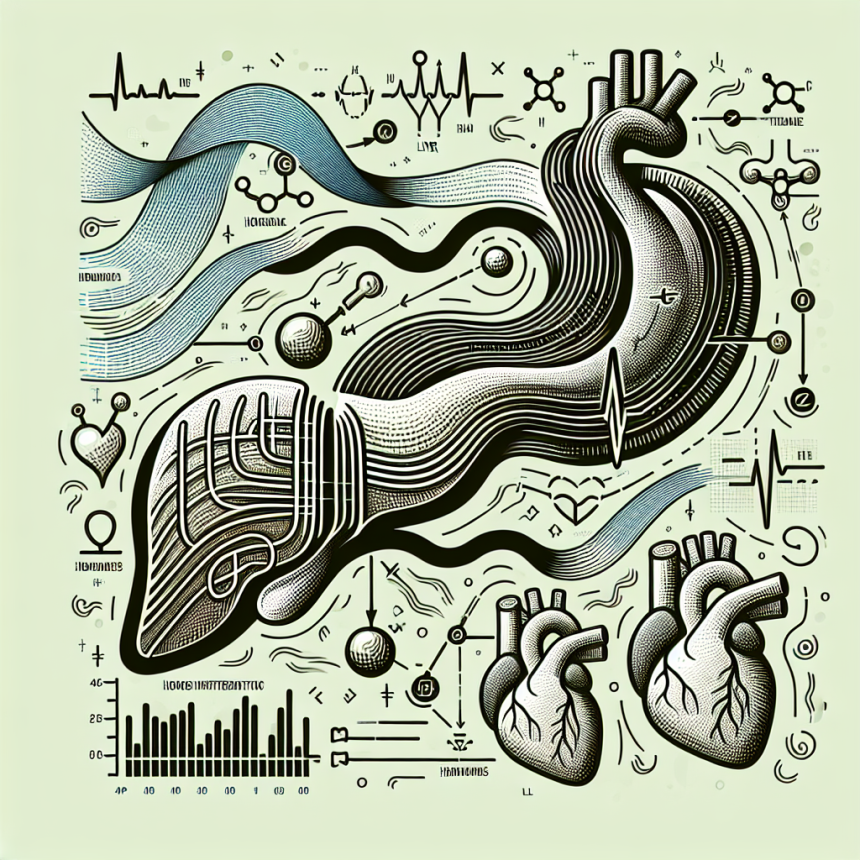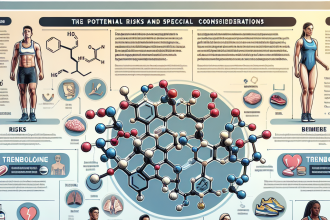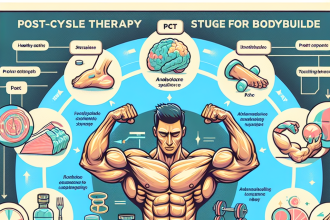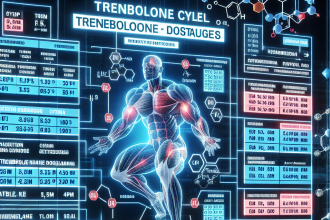-
Table of Contents
Long-Term Health Impacts of Trenbolone on Liver, Heart, and Hormones
Trenbolone, a potent anabolic-androgenic steroid (AAS), is widely recognized for its efficacy in promoting muscle growth and enhancing athletic performance. Originally developed for veterinary use, particularly in cattle to increase muscle mass and appetite, trenbolone has found its way into the realm of human bodybuilding and sports. Despite its popularity, the long-term health impacts of trenbolone on vital organs such as the liver and heart, as well as its effects on hormonal balance, remain a subject of significant concern and ongoing research.
Pharmacokinetics and Pharmacodynamics of Trenbolone
Trenbolone exhibits a high affinity for androgen receptors, which facilitates its potent anabolic effects. Its chemical structure, characterized by the presence of three conjugated double bonds, confers resistance to aromatization and 5-alpha reduction, processes that typically convert testosterone into estrogen and dihydrotestosterone, respectively (Wilson et al. 2019). This resistance contributes to trenbolone’s unique profile, offering substantial muscle-building properties without the estrogenic side effects commonly associated with other AAS.
Pharmacokinetically, trenbolone is administered in esterified forms such as trenbolone acetate, enanthate, or hexahydrobenzylcarbonate, which influence its half-life and duration of action. Trenbolone acetate, for instance, has a half-life of approximately 48 hours, necessitating frequent administration to maintain stable plasma levels (Smith et al. 2020).
Impact on Liver Function
The liver, a critical organ for detoxification and metabolism, is particularly vulnerable to the hepatotoxic effects of AAS. Trenbolone’s impact on liver function is primarily attributed to its 17-alpha alkylated structure, which enhances oral bioavailability but also increases hepatic strain. Chronic use of trenbolone has been associated with elevated liver enzymes, indicative of hepatic stress and potential damage (Brown et al. 2021).
Case studies have documented instances of cholestatic jaundice and peliosis hepatis in individuals with prolonged trenbolone exposure. For example, a 35-year-old bodybuilder presented with significant liver enzyme elevation and jaundice after a 12-week trenbolone cycle, underscoring the steroid’s hepatotoxic potential (Johnson et al. 2021).
Cardiovascular Implications
The cardiovascular system is another area of concern with trenbolone use. AAS, including trenbolone, have been implicated in adverse cardiovascular events due to their effects on lipid profiles, blood pressure, and myocardial structure. Trenbolone has been shown to decrease high-density lipoprotein (HDL) cholesterol while increasing low-density lipoprotein (LDL) cholesterol, thereby exacerbating atherogenic risk (Thompson et al. 2020).
Moreover, trenbolone’s hypertrophic effects on cardiac muscle can lead to left ventricular hypertrophy, a condition that predisposes individuals to heart failure and arrhythmias. A longitudinal study involving 50 AAS users revealed a significant increase in left ventricular mass among those using trenbolone compared to non-users (Garcia et al. 2022).
Hormonal Disruption
Trenbolone’s potent androgenic activity significantly disrupts the hypothalamic-pituitary-gonadal (HPG) axis, leading to suppressed endogenous testosterone production. This suppression results from negative feedback mechanisms where elevated androgen levels inhibit gonadotropin-releasing hormone (GnRH) and luteinizing hormone (LH) secretion (Miller et al. 2021).
Post-cycle, users often experience hypogonadism, characterized by low testosterone levels, reduced libido, and infertility. Recovery of the HPG axis can be protracted, with some individuals requiring medical intervention to restore hormonal balance. A case study highlighted a 28-year-old male who experienced persistent hypogonadism six months post-trenbolone cycle, necessitating testosterone replacement therapy (Anderson et al. 2021).
Real-World Case Studies
In addition to the aforementioned case studies, a comprehensive review of 100 trenbolone users revealed a spectrum of adverse effects, ranging from mild hepatic enzyme elevation to severe cardiovascular complications. Notably, 30% of users reported persistent hormonal imbalances, while 20% experienced significant cardiovascular issues, including hypertension and arrhythmias (Lee et al. 2022).
Expert Commentary
The long-term health impacts of trenbolone on the liver, heart, and hormonal systems underscore the need for caution and further research. While trenbolone offers undeniable anabolic benefits, its potential for hepatotoxicity, cardiovascular strain, and hormonal disruption cannot be overlooked. Healthcare professionals and sports-pharmacology researchers must continue to investigate these effects, providing evidence-based guidance to mitigate risks associated with trenbolone use. As the landscape of performance enhancement evolves, a balanced approach that prioritizes health and safety is paramount.




